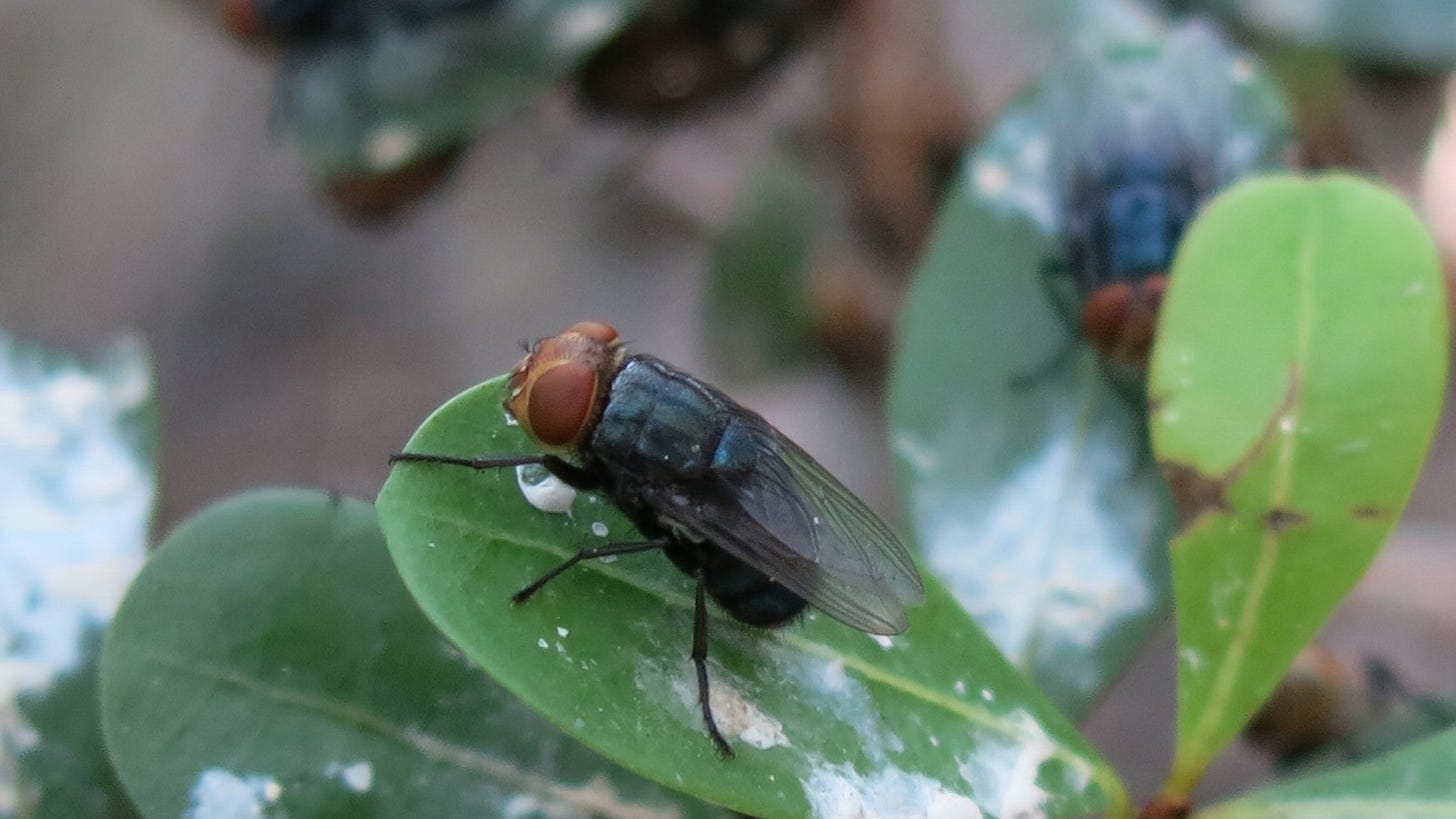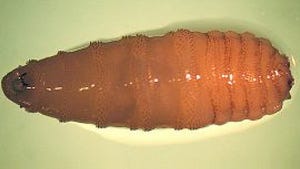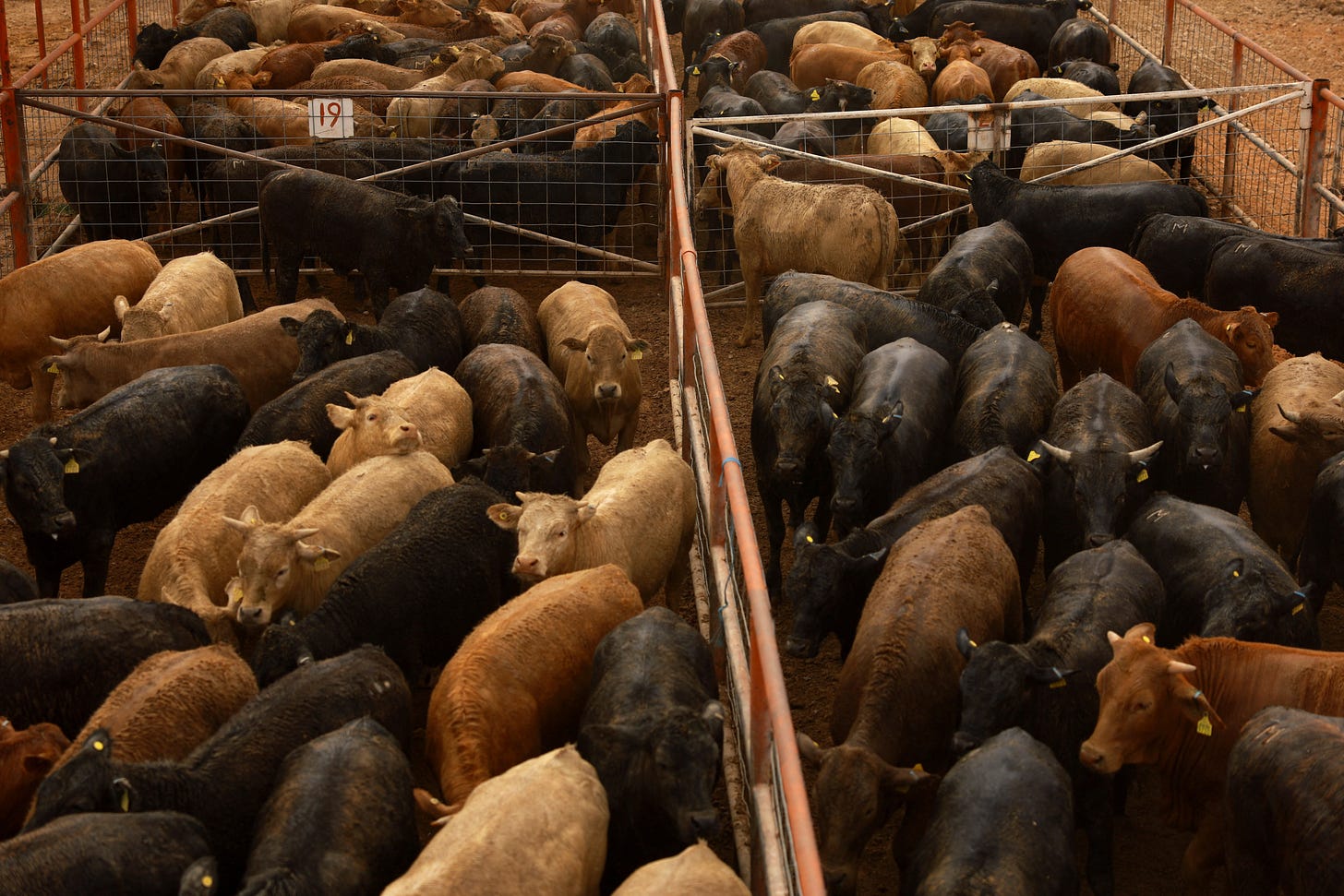Prepare Now for the Screwworm Threat That Is Coming
Identify Threats, Create Contingencies, and Execute Plans on Time
Thank you to Dr. Deborah for sending me information on this emerging threat that has spread from South America into Mexico.
Dr. Deborah Feb 18, 2025, 3:19 PM (18 hours ago) to me
Hi Terral,
Article from USDA 2/6/25. They are beginning to voice this. As you state this is HORRIFIC and currently Central America appears to be ground zero.
There are other links within this article in reference to "how they attempt to stop this", however as we know it will not be stopped as it is part of the destruction of our food supply. If you come across anything else new, please send it to me.
https://www.aphis.usda.gov/livestock-poultry-disease/cattle/ticks/screwworm
Blessings, Deborah
New World Screwworm
Last Modified: February 06, 2025
New World screwworm (NWS, Cochliomyia hominivorax) is a devastating pest. When NWS fly larvae (maggots) burrow into the flesh of a living animal, they cause serious, often deadly damage to the animal. NWS can infest livestock, pets, wildlife, occasionally birds, and in rare cases, people.
NWS is endemic in Cuba, Haiti, the Dominican Republic, and countries in South America, with cases spreading north to Costa Rica, Nicaragua, Honduras, Guatemala, and now Mexico. Although USDA eradicated NWS from the United States in 1966 using sterile insect technique, there is a constant risk of re-introduction into the United States. To prevent the northward movement of this pest from South America to NWS-free areas in Central and North America, APHIS collaborates with Panama to maintain a barrier zone in eastern Panama. The cornerstone of this collaboration is the Panama-United States Commission for the Eradication and Prevention of Screwworm (COPEG). Through COPEG, we release sterile male screwworm flies in the Darien Province of eastern Panama to create a biological barrier.
View Historical Economic Impact Estimates of NWS in the United States
Continue: https://www.aphis.usda.gov/livestock-poultry-disease/cattle/ticks/screwworm
—
Dr. Deborah Feb 18, 2025, 4:05 PM (17 hours ago) to me
More reasons to place 500ppm in the mucus tissue
Clinical Overview of New World Screwworm Myiasis
August 5, 2024
Key points
New World screwworm (NWS) myiasis is typically a disease of livestock but can also affect humans. Countries in Central America where NWS was previously controlled are reporting an increase in animal and human cases.
NWS is endemic in South America and the Caribbean.
NWS occurs in people with open wounds; it can also occur in other body cavities with mucus membranes (e.g., nasal passages).
There is no medication to treat NWS; prevention and quick removal are key.
Healthcare providers should remove the NWS larvae from the affected site.
Kill and preserve the larvae by placing it directly into concentrated (70%) ethyl or isopropyl alcohol.
Send all suspected NWS specimens to CDC for identification and diagnosis.
Cause
New World screwworm (NWS) infestation is a type of myiasis that occurs when NWS fly larvae (Cochliomyia hominivorax) infest the living flesh of warm-blooded animals—most commonly livestock and less commonly birds, pets, and humans. The screwworm flies are attracted to and lay their eggs on and in open wounds and mucous membranes.
The name screwworm refers to the feeding behavior of the larvae (maggots) as they burrow (screw) into healthy tissue. NWS larvae cause extensive damage by tearing into the host's tissue with sharp mouth hooks. The wound can become larger and deeper as more larvae hatch and feed on living tissue. As a result, NWS can cause serious damage to the animal or person it infects. Bacterial superinfection can also occur because of the NWS infestation.
Continue: https://www.cdc.gov/myiasis/hcp/clinical-overview/index.html
—
The Screwworms may already be spreading inside the United States in cattle imported from Mexico. This threat can become a plague that spreads to different species to devastate the food supply, and even spread to people.
—
USDA will not ban cattle imports from Mexico over latest screwworm case, agency says
By Tom Polansek, February 18, 2025
Livestock remain in pens before being exported to the U.S. through the Jeronimo-Santa Teresa border crossing, as the U.S. allowed Mexican cattle imports to resume after lifting a temporary suspension due to the detection of the New World screwworm, at the Chihuahua Regional Livestock Union facility, outside Ciudad Juarez, Mexico, February 10, 2025. REUTERS/Jose Luis Gonzalez/File Photo
CHICAGO, Feb 18 (Reuters) - The U.S. Department of Agriculture will not restrict cattle imports from Mexico after another discovery of a damaging pest called New World screwworm in a cow south of the border, the agency said on Tuesday.
U.S. cattle supplies tightened in recent months after Washington in late November blocked Mexican livestock shipments over the discovery of screwworm in a cow in Mexico.
Another case of screwworm was found in a cow in Mexico's Tabasco state last week, according to the World Organization for Animal Health.
The pest can infest livestock, wildlife and in rare cases, people. Maggots from screwworm flies burrow into the skin of living animals, causing serious and often fatal damage.
The USDA said on February 1 it would lift the ban it imposed in November under new protocols to assess the health of animals before they enter the U.S. from Mexico.
The agency will not take additional action based on the latest detection, USDA said on Tuesday in response to a question about whether it would halt imports again.
==
Everyone subscribing to terral.substack.com receives a 2025 Mystery Report Newsletter Subscription for free (How To Access, Free Newsletter), which gives you access to all the Mystery Report Newsletters going back to 2019. You also receive a free copy of The Mystery Explained (ePub version, available at Amazon) attached to your Dropbox Folder Link notification email.
—
Download a free Black Star Report Newsletter and subscribe to the Newsletter and Survival Group Programs using the links below (see How To Post):
2025 Black Star Report Newsletter Program ($25 per year): link
2025 Black Star Report Newsletter - Survival Group Program ($50 per year): link
2025 Mystery Report Newsletter ($25 per year): link
2025 Mystery Report + Tutor Program ($50 per year): link
Black Star Report and Survival Group Program subscribers receive access to all Black Star Report Newsletters using the Dropbox Folder Link provided in your Notification Email (no Dropbox account, usernames, or passwords required). Survival Group Program subscribers receive Threat Assessment Information (PDF) attached to you Notification Email (always sent by Terral within 24 hours) with the option of joining Survival Groups where available. You also receive the ePub version of The Mystery Explained as an attachment to your notification email for free.
Order your copy of The Mystery Explained at Amazon.com:
The Mystery Explained Amazon: https://www.amazon.com/Mystery-Explained-Terral-Croft/dp/1545620717
Or purchase an autographed-numbered-author’s hardcover copy here (USA only, international here), or at the website. Receive the PDF extended version of The Mystery Explained and 911Truth: Exposing the Cheney-Rumsfeld Black Operation when ordering your Nano Silver at https://www.terral03.com, or at Substack (here).
Contact Terral: terral@terral03.com








Growing up raising show beef cattle we would often pop grubs (larva from flies) out of them and they were fine. It never got below the external layer in to the meat. So this grub/fly phenomenon is not new…So is this just part of them ‘naming’ something to blame to control our healthy foods and starve us out?
2 good reasons to:
1- support your local farmer
2- denounce drone tech, as they will try to use them to "fight outbreaks" as they did in China (James Giordano)